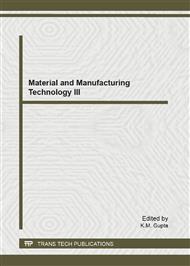p.652
p.657
p.662
p.667
p.672
p.677
p.682
p.686
p.691
The Motion Modeling and Simulation of the Swash-Plate Engine
Abstract:
In order to conduct a comprehensive analysis and optimization improvements of the swash-plate engine, it is necessary to analyze and discuss the motion of the swash-plate completely. Based on the motion model of the piston and the connecting rod of the engine, the motion tendencies were simulated. The results suggest the circumferential distance can cause vibration, noise, and rough running of the piston and the connecting rod in the operating process. Besides, the inertia forces/moments and the unbalanced motion are considered to be the main sources of the vibration and noise. On the basis of the results, we propose a “∞” guide groove, which can reduce the vibration and noise of the swash-plate engine, to improve the kinematical parameters.
Info:
Periodical:
Pages:
672-676
Citation:
Online since:
July 2012
Authors:
Keywords:
Price:
Сopyright:
© 2012 Trans Tech Publications Ltd. All Rights Reserved
Share:
Citation:


